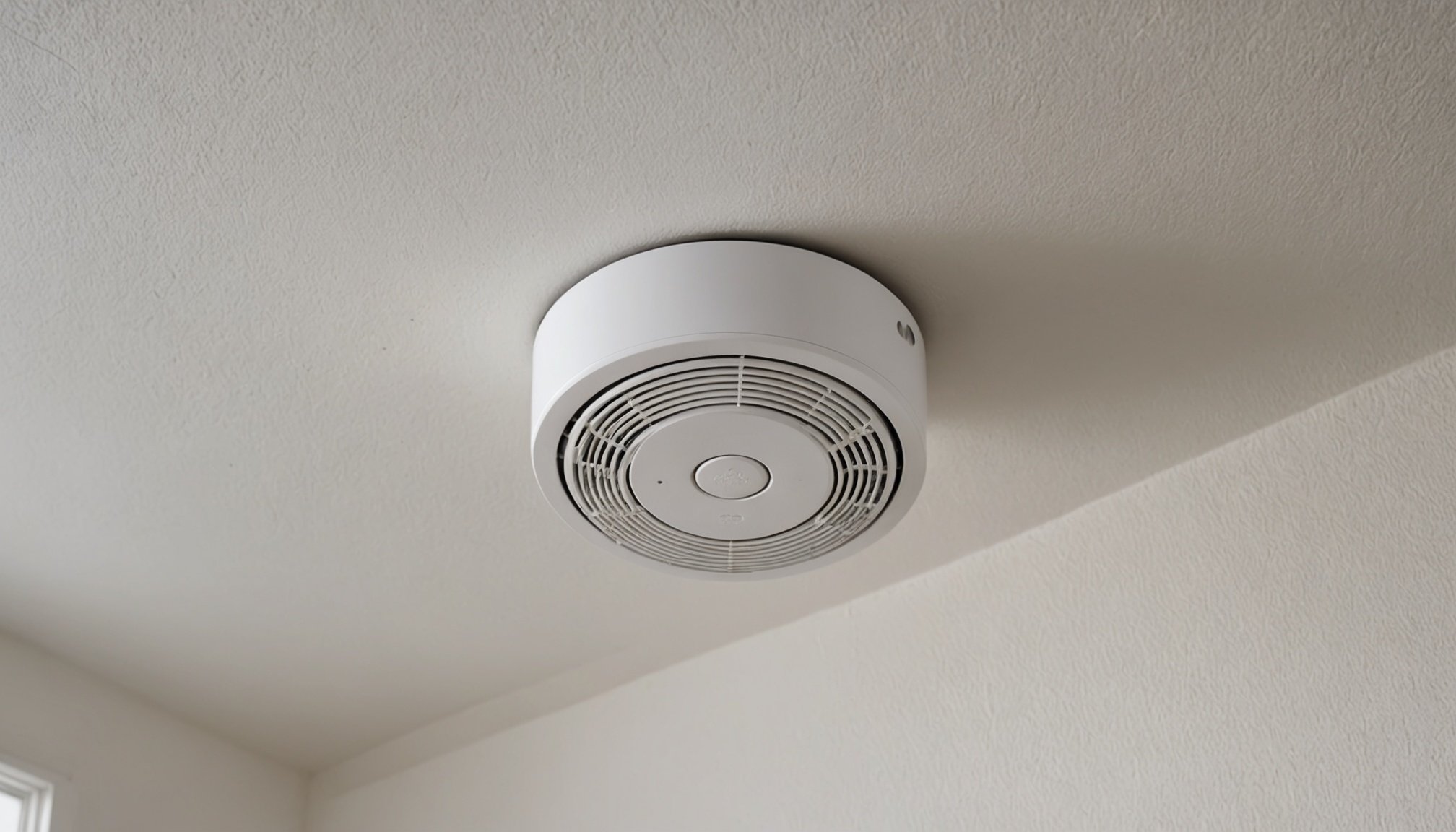Overview of Fast Smoke Alarm Technologies
Fast smoke alarm technology plays a pivotal role in enhancing fire safety by enabling quick detection of smoke. This rapid responsiveness is critical, as it significantly reduces the risk of injury and property damage during a fire. Quick alerts provide crucial time for safe evacuation, making such technology indispensable in homes.
Types of Smoke Alarms Suitable for Multi-Floor Homes
Several types of smoke alarms are highly suited for multi-floor homes, leveraging various smoke detection mechanisms for optimal safety. Photoelectric smoke alarms are adept at identifying slow, smouldering fires, while ionization alarms excel in detecting fast, flaming fires. Combination alarms, which integrate both photoelectric and ionization technologies, offer comprehensive protection.
Importance of Quick Detection in Fire Safety
The speed of smoke detection is a significant factor in fire safety, primarily due to the rapid spread of smoke and flames. Quick detection can prevent disastrous outcomes and is especially vital in homes with multiple levels, where fires can advance swiftly through stairwells and other passages. Implementing the right type of fast smoke alarm technology with efficient smoke detection speed ensures families are alerted promptly, enhancing their ability to respond effectively in emergencies. Understanding the differences between types of smoke alarms and investing in those with proven rapid response times can save lives and property.
Product Comparisons for Multi-Floor Homes
When considering smoke alarm product comparisons for multi-floor homes, it is essential to evaluate the options that provide optimal safety across multiple levels. Choosing the right model ensures comprehensive coverage and effective response.
In parallel : The perfect thermos to elevate every moment of your day
Leading Brands and Models
Among the top-rated multi-floor smoke alarms, brands like First Alert, Kidde, and Nest provide models known for their reliability and advanced features. These brands offer products that cater to various needs, whether you prioritize simple functionality or smart technology integration.
Key Features and Specifications
It is crucial to assess key features such as interconnected alarms, battery backup, and smart home compatibility. These features are significant in enhancing safety in larger homes. Alarms with interconnected capabilities ensure that all units sound simultaneously, providing quicker alerts throughout the home.
User Reviews and Ratings
User reviews highlight the varying levels of satisfaction with different smoke alarm models. Top-rated smoke alarms are often praised for their ease of installation, durability, and alarm sound clarity. Reading user feedback can guide homeowners in selecting models that have proven effective in real-world scenarios.
Evaluating these aspects thoroughly will lead to a well-informed purchasing decision, ensuring that the chosen smoke alarms meet both safety requirements and household preferences.
Installation Tips for Fast Smoke Alarms
To achieve optimal performance, smoke alarm installation demands strategic planning, especially in multi-floor homes. Correct placement and connectivity can significantly enhance safety and effectiveness.
Best Practices for Installing Smoke Alarms
For efficient multi-floor installation tips, it is vital to place alarms on each level, including the basement and attic if accessible. Installing alarms inside and outside each sleeping area further ensures comprehensive coverage. Position units high on walls or ceilings, as smoke rises, to detect it swiftly. Also, consider potential obstructions like furniture or vents that might impair detection.
Strategic Positioning for Optimal Detection
The effective smoke alarm positioning requires avoiding areas prone to false alarms, such as near kitchens or bathrooms. Instead, central hallways or corridors provide efficient coverage. Interconnected alarms heighten protection, ensuring all units sound simultaneously during fire situations, offering optimal detection speed.
Importance of Interconnectivity in Multi-Floor Setups
Interconnectivity is essential in a multi-floor home setup, as it facilitates a unified alarm system. This feature ensures that if one multi-floor smoke alarm detects smoke, all interconnected alarms will sound. This increases the likelihood of early awareness and evacuation. It’s a crucial aspect not only for safety but also for complying with fire safety regulations.
Effectiveness and Reliability of Smoke Alarms
Smoke alarms play a crucial role in ensuring home safety, making their smoke detection efficiency paramount. Understanding reliability statistics and the various factors that enhance a smoke alarm’s performance can aid users in making informed decisions.
Industry Standards and Certifications
Smoke alarm effectiveness is tightly linked to industry standards. Key certifications, such as UL 217 and BS EN 14604, ensure these devices meet rigorous safety benchmarks. Adhering to such standards guarantees basic reliability and confidence in the product’s capability to detect smoke promptly.
Test Results and Studies
Numerous studies investigate smoke detection efficiency, revealing that photoelectric and ionization alarms exhibit different strengths. Photoelectric alarms detect slow smouldering fires effectively, while ionization alarms are quicker at identifying fast-flaming fires. These findings aid consumers in choosing suitable alarms based on specific needs.
Long-term Reliability Factors
Factors contributing to a smoke alarm’s long-term reliability include battery life, environmental exposure, and regular smoke alarm maintenance. Ensuring battery replacement every six months and avoiding placements in harsh conditions such as high humidity or extreme temperatures enhance lifespan. Maintenance, such as cleaning and testing alarms monthly, is vital in preserving their efficiency over time. By focusing on these aspects, users can maximise the operational longevity and dependability of their smoke alarms.
Buyer’s Guide for Selecting Smoke Alarms
Choosing the right smoke alarm is critical for safeguarding your home, and a comprehensive smoke alarm buyer’s guide simplifies this task. Several key considerations can inform your decisions, especially when purchasing smoke alarms for diverse environments.
Budget Considerations
Selecting a smoke alarm often begins with budget evaluation. Costs can vary widely based on features and technology. Affordable options may include basic ionization models, while high-end devices with smart capabilities like connectivity, voice alerts, and mobile notifications carry higher price tags.
Essential Features to Look For
When purchasing smoke alarms, prioritize essential features like dual-sensor capability, battery backups, and easy installation. Dual-sensor alarms combine photoelectric and ionization technologies for comprehensive detection. Battery backup ensures the alarm operates even during power failures. Easy installation involves tools-free setup, saving time and effort.
Recommendations Based on Specific Needs
Recognise the diverse needs within households when selecting smoke alarms. For families with hearing-impaired members, models with visual alerts can be vital. Homes with smart systems may benefit from alarms offering Wi-Fi connectivity for remote monitoring. For those worried about false alarms near kitchens, photoelectric models are advisable due to their reduced sensitivity to cooking smoke.
UK Regulations for Smoke Alarms
Understanding UK smoke alarm regulations is crucial for residential fire safety compliance. Legally, all homes must have functional smoke alarms on every storey. Since October 2015, landlords are mandated to install smoke detectors in rented properties, aiming to ensure tenant safety. Noncompliance risks hefty fines and legal action.
Legal Requirements and Compliance
Smoke alarms must be maintained in working order, tested regularly, and comply with British Standard BS EN 14604. In particular, the alarms need hard wiring or long-life batteries. Fire safety compliance also requires properties to meet specific building regulations which dictate placement location and accessibility.
Responsibilities and Consequences
Homeowners and landlords bear the responsibility for ensuring fire safety compliance. This includes testing alarms at least monthly and replacing batteries or faulty units promptly. Failing to maintain proper smoke alarms can result in insurance issues and increased liability during incidents. In worst-case scenarios, non-compliance could lead to prosecution or invalidate insurance claims following a fire.
Engaging with these regulations safeguards lives and properties. Regular checks and maintenance not only ensure legal compliance but also enhance the safety and peace of mind for all property residents. Following these guidelines helps uphold safety standards and minimise risks associated with fire emergencies.
Safety Tips and Maintenance Advice
Routine smoke alarm maintenance is critical for ensuring optimal performance and safety. Regularly test alarms by following manufacturer guidelines, generally suggesting a monthly check using the test button. Replace batteries twice a year or as indicated by low-battery chirps. For long-life batteries, replace the entire unit at the end of its lifespan, usually every 10 years.
To enhance smoke detector care, position alarms away from dusty areas and moisture to prevent malfunctions. Vacuum around alarms occasionally to remove accumulated dust, ensuring unobstructed sensors. Avoid painting over alarms, as this can impair their ability to detect smoke effectively.
Safety tips for residents in multi-floor homes include developing and rehearsing a fire escape plan. Make sure all family members know the safest and fastest exit routes. Additionally, consider the following strategies:
- Place smoke alarms in every sleeping area and on every level of the home.
- Ensure interconnected alarms for multi-floor settings, providing simultaneous alerts throughout the property.
- Install alarms away from kitchens and bathrooms to reduce false alarms due to cooking fumes or steam.
By focusing on proper smoke alarm maintenance and strategic placement, homeowners can significantly enhance safety and emergency readiness.











